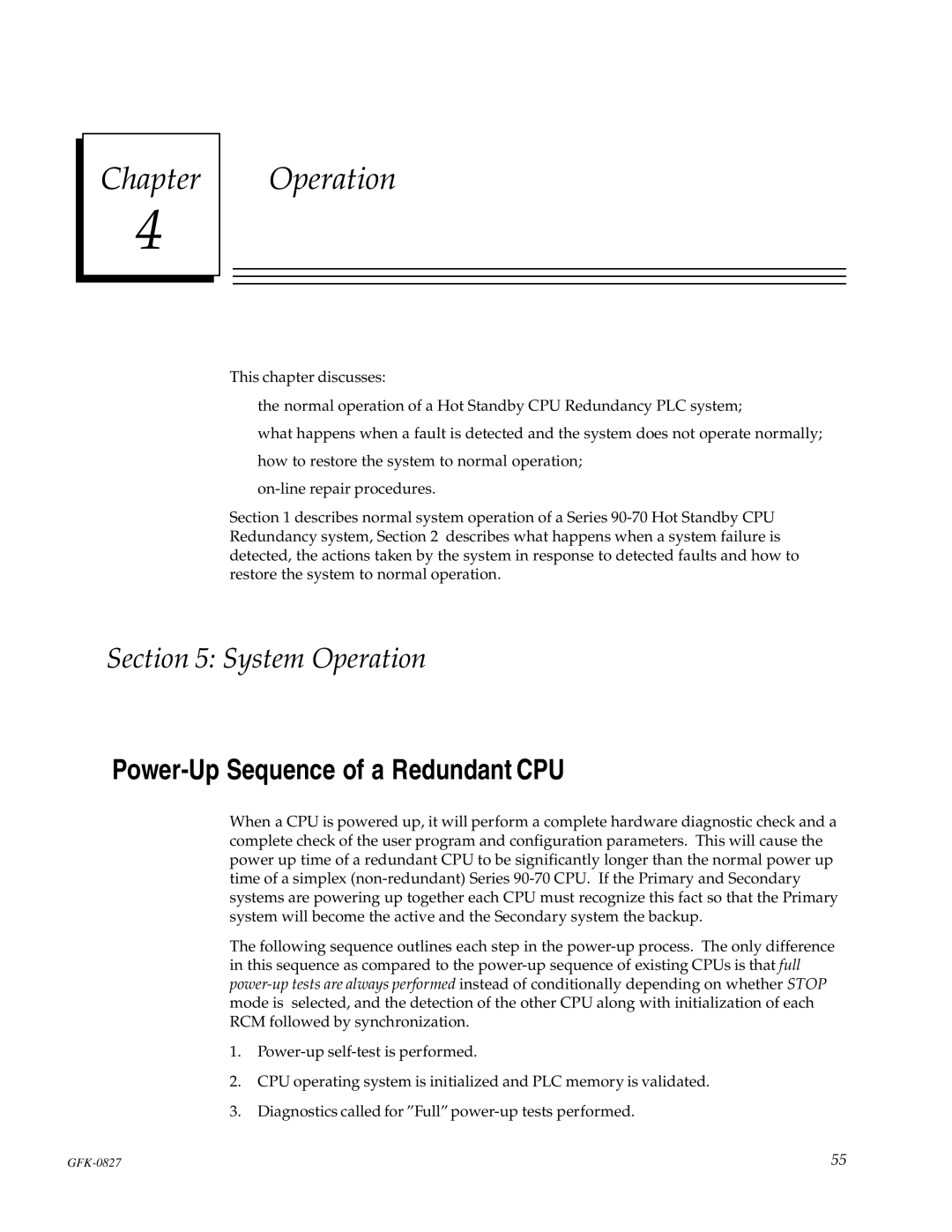
Chapter
4
Operation
This chapter discusses:
Hthe normal operation of a Hot Standby CPU Redundancy PLC system;
Hwhat happens when a fault is detected and the system does not operate normally;
Hhow to restore the system to normal operation;
H
Section 1 describes normal system operation of a Series
Section 5: System Operation
Power-Up Sequence of a Redundant CPU
When a CPU is powered up, it will perform a complete hardware diagnostic check and a complete check of the user program and configuration parameters. This will cause the power up time of a redundant CPU to be significantly longer than the normal power up time of a simplex
The following sequence outlines each step in the
1.
2.CPU operating system is initialized and PLC memory is validated.
3.Diagnostics called for ºFullº
55 |
